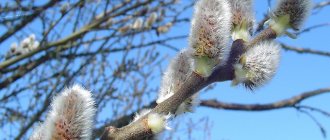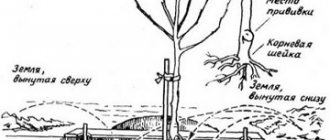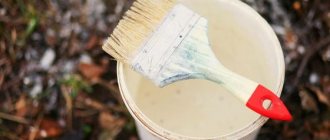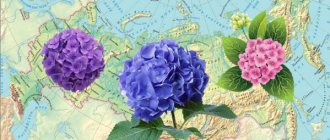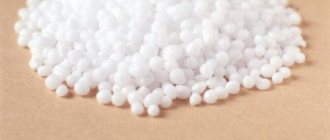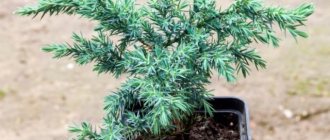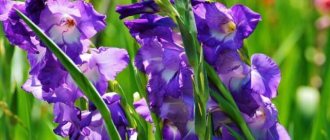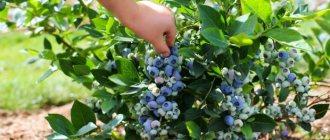Recently, more and more gardeners are choosing conifers to decorate their plots. They look beautiful all year round and are easy to care for - could you ask for anything more? Fluffy spruce, slender pine, delicate larch, yew decorated with red berries, spherical thuja, pyramidal cypress, soft cloud of juniper - each of them can find a place in the garden. The main thing is to choose the appropriate species, variety and know how to plant conifers correctly. After all, the full development and growth of planted plants will largely depend on it.
Saplings
There are certain recommendations for planting conifers that must be taken into account if you want the seedling to quickly recover, grow and develop without pathologies.
Earthen lump
One of the most important rules is that conifers must be planted with an earthen clod, which in no case should be violated. This procedure is contraindicated for trees with an open root system. If it comes from another area, the day before (the day before) it needs to be watered abundantly so that the soil is compacted and does not crumble. If this is a purchased seedling, usually the rhizomes are packaged for this very purpose - to preserve the soil foundation on them.
Do I need to remove the burlap? You should not do this until the very moment of planting, so that the lump does not crumble. Immediately before the procedure, carefully untie and pull off the winding so that the earth does not follow it. It is advisable to do everything directly in the hole. After this, water generously and plant in the ground.
Helpful information. Some gardeners prefer another option for planting purchased conifers. They remove the rigid fixation of the burlap (usually a mesh or wire), but do not remove the burlap itself - they bury it directly with it. Over the summer, the material rots. This can only be done if you are sure that the wrapping of the seedling is made of natural materials and does not contain synthetics.
Root collar
In order for conifers to be planted correctly, it is necessary to be able to determine the root collar. Its distinctive features:
- it is located between the root system and the trunk;
- usually begins at a distance of 2-4 cm from the last lateral root;
- has a pronounced brown color (the roots are yellow, and the trunk gives off greenery).
There are two ways to see the root collar. Experienced gardeners use a knife to scrape off a small area of the top layer of bark. Beginners should not do this, as the tree can be seriously injured, and then it will not develop. It’s better to take a sponge, wet it and rub it thoroughly in the place where the neck should be. If you see a brown color, you will be able to determine its boundaries. Why do this?
When planting, the root collar cannot be covered with soil - it must remain in the air and be well ventilated. If this is not done, the tree or shrub will develop poorly and may die.
There are situations when it is not possible to free this area from the coma (sticking or, if removed, it may all crumble and other unforeseen cases). Then you will have to work carefully. Air drainage is laid in the lower part of the planting hole:
- several trenches are dug (width - 70 cm, distance between them - 1 m);
- they must lead from the surface of the earth to the root system;
- Pipes are laid in them, through which air will be delivered from the surface to the ground.
In the absence of pipes, the trenches are filled with large stones, but this is a less effective method. The hole is half filled with useful humus, then the seedling with a lump of earth is lowered and finally buried.
Planting pit
The depth of the planting hole should be twice the size of the earthen ball. This is necessary to fill it with half useful humus. If it is missing, you will have to fill it back with the soil that was dug up. However, in this case, the ephedra will develop much worse. When the seedling is installed in the hole, the root collar should be at soil level.
As for the width of the planting hole, the palm of an adult man should fit between its edge and the beginning of the earthen lump (the distance from the tip of the middle finger to the wrist is taken).
Mulching
The procedure must end with mulching. This is sprinkling the soil on top with a special material that performs different functions:
- retains moisture in the ground;
- blocks weed growth;
- gives a decorative look (as it should in any beautiful garden).
You should purchase mulch in advance at the garden center. It can be made of gravel or crushed bark. Sometimes it is poured onto spunbond - a special fabric that prevents the growth of weeds. If you don’t have purchased material at hand, you can sprinkle the planting with large pine needles, which will provide the roots with high-quality ventilation. After it rots, mycelium will develop in it. This is very useful for conifers, which are mycorrhizal plants that live in symbiosis with fungi.
Photo of soil mulching:
If the tree or shrub was planted on limestone or dry sandstone, mulching must be repeated every off-season (spring and autumn).
If the conifers were planted correctly, they will not get sick, will quickly recover with appropriate care and will soon become a real decoration of the garden.
Compositions from coniferous plants
Coniferous mixborder
It is usually created along a path, fence, building wall, or used as a hedge.
Low-growing specimens should be planted at the foot of the composition, medium-growing ones should be planted in the center, tall ones can be placed in the background.
The tops of the rows should not create a straight line.
Repeating 3-5 elements will make the composition more original.
Hedge
It can be located around the perimeter of the site.
A dense hedge is created using plants planted in a checkerboard pattern. 2-3 rows are enough. A low-maintenance spruce fence.
All-round compositions
Such compositions are used on round flower beds and lawns. A tall conifer is planted in the center, and low-growing conifers are planted around it, and at the same distance.
The height of the second row should be no more than ½ and no less than 1/3 of the height of the central row - the highest.
The height of the 3rd and 4th rows must be reduced proportionally, without covering the previous row.
If you decide to create asymmetrical compositions, then the plants should be placed so that it is impossible to visually draw a straight line through every three elements.
How to create a beautiful composition of conifers (video)
Seeds
One of the most difficult processes from a technical point of view. As a rule, planting coniferous seeds is required in certain cases - if you need to plant a large area, sell seedlings, or become the owner of some rare breeding variety that is not commercially available as seedlings.
Collection
Conifer seeds can be purchased ready-made or collected independently according to the following scheme:
- In winter, remove two-year-old cones that are grayish (not green) in color.
- Treat them at elevated temperatures: 45°C for 24 hours, 40°C for 48 hours.
- Exfoliate the pine cones.
- Remove the seeds.
They should be stored in paper bags in a dry place at room temperature, ventilated regularly.
Scarification
Hard-covered seeds of yew and juniper require mandatory scarification. This is a procedure that allows you to soften the top layer of planting material, thereby providing them with a higher percentage of germination. It goes like this:
- Clean the seeds extracted from the cones from debris (wings, partitions, insect parts, dust).
- Dry.
- Soak for 30 minutes in sulfuric acid (so-called pickling).
- Rinse thoroughly under running cold water.
- Immediately after this, either begin planting or stratification.
For other types of conifers, scarification is not necessary. But, if in doubt, you can do the following manipulation. Line the walls of any box with sandpaper, put the seeds there and shake thoroughly. For pine, this procedure is strictly contraindicated, since its seed material is too soft.
Stratification
This procedure allows you to speed up the process of seed germination. It is carried out according to the following scheme:
- Mix peat and wet sawdust in a ratio of 3 to 1.
- Mix the resulting mixture with conifer seeds.
- Place in boxes and close with lid.
- Place in a dark place.
- Maintain the desired temperature: southern and heat-loving conifers need warmth, northern ones need cold, and those adapted to a temperate climate need room temperature.
- Twice a week, containers must be opened, shaken, and loosened. If the substrate becomes wet, it should be replaced with a dry one.
After the sprouts have emerged from the seeds, they are planted either in separate containers or directly into open ground.
Coniferous seedlings are unpretentious. If it is in pots, you should not put them on a windowsill or in a dark room. She needs moderate sunlight and room temperature. The soil should be loosened regularly. Typically, sprouts are planted in the ground when they reach 10-12 cm in length, but it all depends on the type of conifer.
If the garden is inaccessible, we will sow at home
The advantages of home sowing are that you control each seedling with a small number of seeds, you quickly respond to any disease, no one will eat the seeds. Disadvantages - germination is worse, infections occur more often, if you need a lot of seedlings, they require a lot of space.
Coniferous seeds are either quite large or very large, so for convenience and to save space, I stratify them in bags or lettuce transparent containers in vermiculite. I pour vermiculite, moisten it quite strongly, add the seeds there, shake it and close it tightly (tie the bag). After a day, I put all this in the refrigerator, where the temperature is 2-3 degrees above zero.
Then I check the seeds regularly. If they begin to sprout, roots 1–3 cm long appear, I take them out of the refrigerator and plant them in orderly rows in pots with steamed soil, which I place in a mini-greenhouse in maximum light. If the window is dark or it is still February - March, the seedlings have to be illuminated, as they need a lot of light for normal development.
Large sizes
With seedlings there is the least amount of hassle; the process of seed germination is meticulous to the smallest detail. But planting large coniferous trees is quite labor-intensive and often requires the intervention of professionals. Why is it better to order it from companies specializing in planting mature trees?
Firstly, you can count on careful transportation. Even the largest coniferous trees will end up near the planting site without damage to the needles, trunk and other parts. Doing this on your own is incredibly difficult, if not impossible. After all, they are quite tall and the width of the crown (especially in the lower part) is voluminous. Even if a group of amateur (non-professional) gardeners is involved, the risk of injuring the tree is too great.
Secondly (and this is the most important thing), large trees are planted with an open root system. Even slightly damaging it during transportation or carrying can ruin the plant. And some mature conifers cost a fortune.
Thirdly, large conifers have a very branched and powerful root system. To dig a planting hole for it manually will require several workers or several days. Professionals use special equipment for this. Even excavators are often used, if space on the site allows. But quickly and efficiently.
In many cities and forestry enterprises there are special companies that provide such a service as planting large coniferous trees. They charge considerable prices, but they guarantee the quality and reliability of transportation, delivery, and landing. Moreover, they also have an assortment of planting material. If you find a serious company, you can even order the removal of an adult tree from abroad. German plants are especially popular.
Conifer seedlings: why they should be planted in spring
People often contact me with questions about why cypress, juniper, and fir trees do not winter. Friends, conifers are not strawberry mustaches or peonies; they are much more vulnerable plants. It is enough to dry them once along with the roots - and hello, they will not recover; It is enough to water them once with a saline solution - and the same result will occur.
The first winter after purchase is also a big test for these plants. Although they are by nature frost-resistant, this is only with healthy preparation for winter: their stems must mature, become woody, become tough, and absorb and process all nutrients. If the plant has been constantly encouraged to grow and pumped with nitrogen, then its stems remain loose and green until winter and will not tolerate frost.
How to be? The first rule that I usually follow when purchasing vulnerable conifers is to give preference to a spring purchase rather than an autumn purchase . By purchasing plants in the spring, you have the opportunity to successfully prepare your new recruits for winter.
What is needed for this? Plant in the sun. In the greenhouse they had insufficient lighting, and with a lack of sun, as we know, nitrates and other substances are not completely broken down, but accumulate in the tissues, upsetting their balance.
In addition, abundant watering . You should water new plants more often throughout the summer so that the fluid cycle removes from them the “chemistry”, the pesticides that were loaded into them at the nursery.
And no fertilizers, no fertilizing! The soil must be well-groomed, moderately fertile, optimal for a given crop, in order to ensure noticeable growth without fertilizing, since in the first summer it is important for us to increase the volume of the plant - its stems and foliage, so that the “chemistry” is dispersed, this will reduce its concentration in the tissues .
Methods
There are different ways to plant conifers in a garden plot.
Ordinary
An ordinary (single) planting will require a lot of space. For example, a wide lawn or a spacious lawn where there are no other garden plants. Applicable to large coniferous species: spreading spruces, tall pines and mighty cedars. It is expected that the tree will grow in this place for many years, without pruning. It is necessary to ensure in advance that the height and volume of the crown do not shade other plants that need sunlight. Another point that is worth paying attention to is that the powerful root system does not damage the foundation of nearby buildings.
Group
Usually these are flower arrangements, flower beds of continuous flowering, rockeries, alpine slides, ridges, mixborders and parterres. In each of them there is a place for several types of decorative conifers. The shortest ones are planted in front (for example, the mountain pine Golden Glow or the blunt-leaved cypress Aurora). In the center are medium-sized ones (for example, Chinese juniper Mint Julep or yew berry Elegantissima). And already behind (or in the center, if it is a circular flowerbed) there are tall coniferous shrubs (cypress dullifolia Draht or cryptomeria japonica Elegans Viridis).
In group compositions, nesting planting is allowed, when the plants are located at a short distance from each other. However, here it is worth considering the width of the crown so that overgrown plants do not overlap one another.
Hedge
These are dense row plantings of conifers that protect a plot or house from wind, loud sounds and prying eyes. They can act as a fence or divide the garden into zones. They require constant shaping (decorative trimming). Ideal options are cypress trees, thuja, yew and some types of low spruce trees.
Alley
These are more sparse (at a distance from each other) row plantings of conifers, usually along garden paths. Often mixed with deciduous trees. Here you can already use tall plants that grow and provide shade and coolness during the hot summer.
Options for planting conifers (flower beds):
The distance between coniferous trees is determined by the planting method. For example, for a dense hedge, cypress trees are planted often - literally every meter. In group flower arrangements, low-growing shrubs and ground covers can even be planted every half meter. If it comes to an alley or large-scale plantings of large trees, there are the following standards:
- light-loving conifers (larch and pine) - at a distance of 3.5-4 m from each other;
- shade-tolerant and shade-loving (all others) - after 2.5-3 m.
Conifer planting scheme
Which coniferous plants to choose - tall or short?
Tall conifers
They can be planted in different areas - both small and large. This should be the main tree in the ensemble, and low-growing conifers should be placed around it. The main thing is to create a harmonious “picture”.
When planting tall conifers, try to choose the right place. Here you need to take into account that in the future the tree will become large.
However, remember that if a coniferous plant grows too quickly and others cannot keep up with it, then it can be temporarily stopped. To do this, you need to pinch the shoots and trim them. You need to shape the crown regularly, otherwise you will get a shape that is not the one you originally wanted and, of course, will ruin the aesthetics.
Conifers of medium height
If it is not possible to plant a tall tree on the site, then the problem can be solved with the help of medium-sized trees or shrubs.
Konika spruce – dwarf. This is a mutation of Canada spruce. It reaches a height of about four meters and grows about 6 cm per year. The crown is lush and resembles a candle.
Golden yew is an evergreen shrub with a spherical shape, reaching a height of about 4 meters and a width of up to 5 meters.
Yew berry is a compact shrub. It has thick needles. Looks beautiful in an ensemble. True, it grows slowly.
Dwarf forms
Dwarf conifers fit well into the overall design.
The Hampi mountain pine reaches a height of 50 cm, and the diameter of its crown is no more than 1 m.
Spruce Lombers spreads along the ground, looking like spruce branches.
Choosing a place
Proper planting of conifers involves careful selection of a location on the site depending on the soil and light (shade).
What should the soil be like in the garden plot:
- drainage, without stagnation of melt and groundwater (for this, the bottom of the planting pit is lined with brick chips, stones, crushed stone, expanded clay, etc.);
- breathable;
- slightly acidic (recommended acidity is 4-5, but may vary depending on the variety planted);
- enriched with organic and mineral fertilizers.
Do not forget also that when planting conifers, the soil must be enriched with a nutrient mixture (turf, peat, sand, humus, clay), which is placed in the planting hole.
As for shady and sunny places on the site, the easiest way is to remember which conifers can be planted in the sun, because there are only two of them. These are larch and pine. The rest can be placed in the shade and partial shade.
When to plant coniferous seedlings, apple and pear seedlings?
Pavel Trannoy is a soil scientist, author of original methods, and a gardener with 40 years of experience.
Traditionally, the time for planting seedlings is considered to be autumn and spring. But when is it better to plant, for example, thuja or juniper? What about apple or pear seedlings? Why do gardeners often simply lose money when they buy coniferous seedlings in the fall? Gardener and publicist Pavel Trannoy tells.
Recently, one woman told me at a lecture that her ornamental pine tree died, did not survive the winter, and that, in her opinion, pines do not take root here at all. I noted to her that she probably bought a pine seedling in the fall, and the woman confirmed this.
How do perennials “ruin” gardeners? Firstly, they are more expensive, and secondly, they face wintering, which they will not survive. Let's look at these two very real facts separately.
The cost of a seedling is largely related to a question of psychology: oddly enough, the larger the size of the plant, the more valuable it is in the eyes of most buyers. Even if it is a rare variety, if it is represented by a sprout the size of a matchbox, then for most summer residents it is a “trick” for which money is a pity.
Sellers “guess” this, so they try to make the planting material large in size at any cost. And here they are faced with an ordinary law of nature: perennials develop much more slowly in the first year than annuals. They have different growth rates in the first year.
Indeed, if an annual is capable of growing from a seed into a bush waist-deep or higher in one summer, then perennials will even produce modest shoots from a cutting, and even more so from a seed. It is impossible to get a tall seedling of juniper, clematis, etc. from cuttings in the same summer. So perennials are kept in the nursery for several years, as a result of which their cost increases.
Therefore, tall planting material for many ornamental and fruit crops usually costs from 500 rubles. Accordingly, losses from the death of at least one object are unpleasant.
Why do purchased perennials often not survive wintering? Yes, all for the same reason - because of its large size. In order for them to have an impressive presentation, manufacturers literally pump them with easily digestible fertilizers. During their entire time in the nursery, the seedlings receive continuous feeding and are not allowed to mature or prepare for winter. Their watery stems cannot withstand frost.
How then do they endure the winters of the producers themselves? Stay warm! Somewhere in the south, or in a greenhouse, or in a refrigerator with a constant temperature of 0 ° C. (You know that since those seedlings that you buy in the spring have leaves and even flowers blooming so luxuriantly, it means they spent the winter in a greenhouse.)
Seasonal features
Even among professionals, there is no consensus on when it is better to plant conifers - in spring or autumn. It all depends on what form your conifer is in. If these are seedlings or young seedlings, without a doubt, in the spring. If the plant is already mature and has overwintered - in the fall.
But most experts are still inclined to believe that the optimal time for planting is spring before the heat sets in.
Spring
When exactly is the best time to organize spring planting?
In March, immediately after the first thaw, when it will be possible to stick a shovel into the ground; at a soil temperature of +3°C (possible frosts are not beneficial).
Until what time can conifers be planted in the spring?
Before the start of intensive growth of the aerial part, before the appearance of buds and before the onset of heat.
Autumn
On the one hand, autumn planting is recommended by many experts. On the other hand, there are several rather serious points. If you do not take them into account, you can harm the plant and even destroy it.
Moment one. The most advantageous option is in early September, during active growth of plant roots. At the same time, you need to be extremely careful: if they are accidentally damaged even a little during this period, the ephedra may die.
Second moment. It is allowed to do this during the period when the conifer has just fallen into hibernation. It falls around November. But there is a pitfall here: it is quite difficult to guess exactly whether a tree has fallen asleep or not. A mistake in this case could cost him his life.
Can I plant in October?
It’s better not to do this, since usually in our climate zone this month is spent by conifers to prepare for hibernation. At this time, active biochemical reactions occur in them, in which it is better not to interfere.
It is quite difficult to distinguish between the periods when the conifer completes active root growth, when it begins to prepare for wintering, and at what moment it falls asleep. Nevertheless, the planting period depends on this. Therefore, many experts insist that it is better to do this in the spring.
Winter and summer
You can plant conifers in winter when they are dormant, which reduces the risk of damage and injury. However, it is recommended to perform this trick only with mature, large trees. The seedlings may be too sensitive and cannot survive the winter immediately after planting.
Summer is the most unfavorable time for planting conifers in the country. This is only possible if the plant was purchased in a container. However, there is a big risk here. If an unscrupulous seller transplanted it there from open ground, the chances that it will take root are extremely low. Therefore, it is better to leave this matter until autumn or spring - the most optimal planting dates.
Planting and caring for coniferous trees in the open ground garden
Due to the fact that conifers are difficult to take root when transplanted, the main care for them in propagation beds is aimed at the formation of a fibrous, compact root system. For this reason, seedlings of coniferous plants, especially large ones, are usually grown in three schools.
Planting and caring for coniferous trees in the open ground garden
Since coniferous trees have been in each school for the same number of years as deciduous trees, they can be grown in a general school. Where coniferous species are grown in large quantities, special areas are allocated for them with their own rotation of crops.
Before planting coniferous trees, the soil is prepared in the same way as in a school of deciduous trees. Complex fertilizers consisting of nitrogen, phosphorus and potassium fertilizers (nitroammofoska, nitrophoska, azofoska, diammofoska, etc.) work well on coniferous plants. They are applied to the soil at the rate of 50-70 g per 1 m2.
After planting and before feeding, the seedlings must be watered.
How to plant conifers correctly so that the plants develop harmoniously? When planting plants in the first school, the distance between them is 1 x 0.5 m, in the second - 1 x 1 m and in the third - 1.5 x 2 or 2 x 2 m. From the first school, seedlings are transplanted into the second, dug them out one plant. For the remaining plants, the roots are trimmed with a staple at a depth of 30-35 cm.
Soil care in a conifer school is the same as in a deciduous school.
However, the propagation methods described above are most often not used, but we buy ready-made seedlings or transplant them from one place to another. In this case, proper replanting of conifers is crucial.
How to plant coniferous plants correctly - in groups or individually? Among the variety of coniferous species, there are species that can be planted in groups and individually among lawns, in sunny places, in partial shade, even in the shade in gardens, summer cottages and personal plots. They are suitable for alpine slides, for planting on slopes, for creating natural and trimmed hedges. It all depends on the area of the plot, its topography and the individual taste of the owner.
When planting coniferous plants, keep in mind that some species stretch straight up, others are more spreading, and others have a sort of drooping crown. There are also those that creep along the ground. All these plants are very impressive with the characteristic color of the crown or its interesting shape, the autumn color of the needles or picturesque cones.
Many types of coniferous trees are characterized by a regular, symmetrical crown shape. This applies to spruce, fir, as well as thuja, cypress, and some pyramidal junipers, which are often grown in gardens. Therefore, they are especially suitable for planting, for example, near a pond and other buildings, where, due to the correctness of their shape, they serve as a link connecting the buildings with the environment. The strict outlines of coniferous plants also fit well into free group compositions.
Coniferous plants are generally undemanding to soils; they tolerate any soil, with the exception of excessively wet and excessively dry, highly saline and swampy soils. The most suitable for them are loamy or light sandy loam, slightly acidic and well-drained.
Species features
Despite the fact that planting conifers has many common points for different types of trees and shrubs, each variety has its own characteristics that should definitely be taken into account.
Additional recommendations by type:
- Spruce: after planting, do not trample or compact the soil within the diameter of the trunk circle.
- Cypress trees, yews and thujas are among the simplest in terms of planting; no additional recommendations are given.
- Larch: planting in a permanent place is possible only after the plant reaches the age of 4 years, the period is in the spring, before buds open, and it is necessary to preserve young thin roots with mycorrhiza (fungal formation).
- Juniper: capricious in terms of soil choice, for example, Siberian juniper needs to be planted in sandy soil, Cossack juniper in calcareous soil, Virginia juniper in clay soil.
- Fir: planting in a permanent place is possible only when the plant reaches the age of 5 years.
- Pine: young seedlings up to 5 years old are planted in the ground.
Planting conifers on a summer cottage is a troublesome, time-consuming and difficult undertaking. At the same time, it pays off with year-round greenery in the garden that pleases the eye, which does not require special care.
How to grow conifers from cuttings
Thuja, juniper, yew, and cypress trees propagate well from cuttings; fir and spruce are much worse. Pine and larch are extremely difficult to take cuttings, so you shouldn’t even try.
It is important to choose cuttings wisely. It is better to take green young shoots, but only from a healthy tree.
It is undesirable to use side shoots, since the plant may later begin to bend during growth and then you can forget about the beautiful shape of the tree.
There are several rules for planting cuttings
Cuttings are taken from spring to late autumn. The best time is April-May, when the energy of growth intensifies.
Winter cuttings take root only in the spring.
From the main branch or from smooth side shoots you need to tear off a cutting, always with a piece of wood with bark. If there are pine needles, cut them with a sharpened knife. After you have prepared the cuttings, collect them in a bouquet. Bandage and soak in a solution (for example, Epin) for 12 hours.
When the cuttings have spent some time in the solution, powder them with the Kornevin preparation. After this, fill the container with sand sprinkled with a solution of potassium permanganate (this will help get rid of possible pests). Make holes in the sand. The cuttings are placed at an angle of 45-50 degrees.
The cuttings are planted at a certain distance - about 5 cm from each other. They need to be pressed with sand. Then cover the container with a plastic bag. It is advisable to keep the box in a dark place, moistening and ventilating it. After a year, when the plant becomes stronger, it can be planted in the ground.
Stimulation of root formation
The best stimulator for root formation is a 5% solution of regular sugar (a teaspoon per 100 ml of water). It can be kept in this solution until planting.
When the conifers grow in pots, it is best to plant them in the ground without using cups. It is good to add peat and sand to the hole. There is no need to add ash, because conifers feel favorable only in acidic soil.
Fertilizing begins after planting the cuttings, spraying with complex fertilizer.
Before winter, cuttings are planted in the usual way.
Apple and pear seedlings: when to plant trees
However, you can safely buy apple or pear seedlings from a local nursery in September-October, since these are hardy crops, and in addition, when planting, they can be surrounded by a mound of earth, hiding part of the trunk above the grafting site from frost.
And yet, when buying fruit tree seedlings, you need to be even more careful than when buying ornamental perennials. In general, growing apple trees, pears and some other fruit trees is much more difficult than, say, ornamental or vegetable crops. Why?
When you are dealing with cucumbers, strawberries, junipers, then you are dealing with whole plants, but an apple or pear tree is a grafted plant. Imagine that some organ has been transplanted to a person - how much more difficult it is for this organ to work than the native one: it can no longer be loaded like the previous organ, it requires a gentle diet, etc.
Our fruit trees are the same. As long as the care is exemplary, moderate loads, well-established nutrition, the apple tree bears fruit regularly, because the connection between the top and bottom, rootstock and scion, is ensured. But as soon as the load increases, vaccine rejection begins. We don’t understand well that when an apple tree gets sick with black cancer, or branches dry out on it, or a tinder fungus takes up residence - all these are forms of vaccine rejection. At the same time, the root is trying with all its might to give off shoots, because it is still tenacious, you can’t take it so easily.
So it turns out that the apple tree must be treated very carefully, moderate loads, avoid large doses of fertilizers, select mild fertilizers, prevent acidification of the soil, make lightening pruning, lighten the crown, and select favorable neighbors.
An apple or pear tree is a completely man-made plant, it needs care, it cannot grow on its own. But in our gardens they grow abandoned, and their owners are still surprised why they don’t bear fruit. Yes, they are busy surviving, where else can they bear fruit! And if you start working hard with them, they will stop bearing fruit again. So it turns out that only very savvy people can get regular fruit harvests.
And now appreciate how we treat purchased apple tree seedlings: they keep them at home for several days before they go to the hacienda! Is this really how they treat transplanted organs? If you have already bought seedlings, you need to immediately take them and plant them, putting all matters aside. The best conditions for planting fruit tree seedlings are quick transfer “from ground to ground” : they are dug up and planted in a permanent place on the same day.
